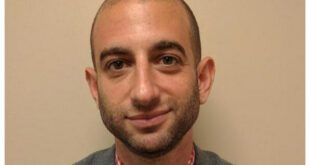Janet Louise Yellen is an American economist who has been serving as the 78th Secretary of the Treasury of the United States of America since January 26, 2021. She was born on August 13, 1946.
She formerly held the position of the 15th chair of the Federal Reserve from 2014 until 2018, during which time she was affiliated with the Democratic Party.
Yellen is the first person to have commanded the White House Council of Economic Advisers, the Federal Reserve, and the Treasury Department. She is also the first woman to hold each of those offices.

Facts About Janet Yallen’s Husband, George Akerlof
A Nobel Prize-winning economist, George Akerlof has been married to Janet Yellen for more than 40 years.
As the first woman to lead the Federal Reserve under the Obama administration, Yellen created history. When she was confirmed as President Joe Biden’s new Treasury Secretary, she created history once more.
What you should know about Yellen’s hubby is as follows:
- Akerlof Won the Nobel Prize for His Research on the Effects of “Asymmetric Information” on Prices On October 10, 2001, in Berkley, California, George A. Akerlof, an economics professor at UC Berkley, received the Nobel Prize in economic sciences.
On October 10, 2001, in Berkley, California, George A. Akerlof, an economics professor at UC Berkley, received the Nobel Prize in economic sciences.
Like his wife, Akerlof is a well-known expert in the field of economics. In 2001, he received the Sveriges Riksbank Prize in Economic Sciences. He shared the honor with Columbia University economist Joseph E. Stiglitz and Stanford University economist A. Michael Spence. Akerlof received his honor for his studies on how “asymmetrical information” affects markets and pricing, according to the Nobel Prize website. In summarizing Akerlof’s contribution, the committee said:
studied markets where sellers of goods have access to better product quality knowledge than purchasers. He demonstrated how high-quality products may be driven out of such marketplaces by low-quality products, which could have an adverse effect on their prices.
Akerlof spent decades refining this concept. Akerlof used sales of cars in his 1970 essay “The Market for Lemons” to support his theory. He came to the conclusion that when there is a lack of shared information on the quality of the vehicles, both buyers and sellers lose out on better deals. The “lemon” in this case is an unreliable car that the seller just wants to get rid of. According to Akerlof’s theory, the buyer may be willing to pay more for a high-quality vehicle but gives a lesser price because there is a possibility that the automobile could be a “lemon.”
At a ceremony honoring the 2001 US Nobel Laureates on November 27, 2001, President George W. Bush congratulates Nobel Laureate Dr. George Akerlof (L).
At a ceremony honoring the 2001 US Nobel Laureates on November 27, 2001, President George W. Bush congratulates Nobel Laureate Dr. George Akerlof (L).
Assume that some automobiles are high-end and some are “lemons.” There would be two distinct marketplaces, one for low-quality cars and the other for lemons, if consumers could distinguish between them. However, there is frequently asymmetric information: although vendors are aware of which automobiles are lemons, purchasers are unable to identify them.
Therefore, a customer is prepared to spend less than he would if he were positive that he was purchasing a high-quality car since he is aware that there is a chance the car he buys would be a lemon. High-quality car vendors are discouraged by the reduced price for all used autos. Despite the fact that some would be willing to sell their own vehicles for the price that buyers of high-quality pre-owned vehicles would be prepared to pay, they are not willing to sell at the lower price that accounts for the possibility that the purchaser may receive a lemon. Exchanges that could have benefited both the buyer and the seller consequently do not occur, and efficiency is lost.
- George Akerlof spent the majority of his career as a professor of economics at the University of California, Berkeley (UC Berkeley). He shared the 2001 Nobel Prize in Economics.
Getty George Akerlof, a professor at UC Berkeley and co-winner of the 2001 Nobel Prize in Economics, on the Berkeley campus in October 2001.
The Akerlof household developed a habit of sending members to Yale University. Akerlof’s older brother went to Yale as well, and his father was a chemist there. Akerloff outlined the outside factors influencing his school choice in an autobiographical essay for the Nobel Foundation.
I had no choice but to go to college. My brother graduated from Yale. I probably would have listened to the Lawrenceville assistant principle when he warned me not to ruin my life by even considering attending Harvard instead, even if my brother’s preference had not taken precedence.
In order to select between a profession in economics and one in history, Akerlof said he spent two years working for the Yale Daily News. After being turned down for a seat on the newspaper’s board, Akerlof started to concentrate on math, though he first struggled with it. Before a family friend who was a Princeton mathematician intervened to coach him, the student claimed that he was failing an algebra class.
after receiving an economics bachelor’s degree from Yale in 1962. For graduate school, Akerlof enrolled at MIT. After obtaining his Ph.D., he accepted a position as an assistant professor at the University of California, Berkeley. Akerlof obtained full professor rank in 1978, according to his bio on the university’s website. According to the website of the Berkeley economics department, his most recent position was Senior Distinguished Professor Emeritus of Economics.
Additionally, Akerlof has imparted knowledge at Georgetown’s McCourt School of Public Policy. In his biography, Akerlof stated that although his “research is founded in economics, it frequently borrows from other disciplines, including psychology, anthropology, and sociology.”
Yellen also lectured at UC Berkeley, and she and her husband occasionally worked together on research projects. Akerlof and Yellen’s 1990 article on how low wages affect unemployment and a worker’s effectiveness at work was motivated by their actual hunt for a decent babysitter, as the Mercury News revealed in 2014.
- Yellen & Akerlof The couple wed after less than a year after they first met in the Federal Reserve’s cafeteria Getty At the Federal Reserve Building on February 3, 2013, Janet Yellen takes the oath of office as chairman of the Federal Reserve while her husband George Akerlof watches.
Getty At the Federal Reserve Building on February 3, 2013, Janet Yellen takes the oath of office as chairman of the Federal Reserve while her husband George Akerlof watches.
The romance between Akerlof and Yellen began at the Federal Reserve’s cafeteria. Yellen was employed by the Federal Reserve Board of Governors in 1977 as a research economist. Yellen accepted the position after being refused tenure at Harvard University, where she taught from 1971 to 1976, according to the Washington Post.
While temporarily employed for the Federal Reserve in Washington, D.C., Akerlof was. According to Reuters, Akerlof had been given a job in the company’s research department. It didn’t take long for sparks to fly between him and Yellen when they first met in the Fed cafeteria in the fall of 1977.
Less than a year after first meeting, Yellen and Akerlof got married in June 1978. Akerlof wanted Yellen to relocate with him to the London School of Economics where he had accepted a position. He gave the Nobel Foundation the following account of their brief courtship:
We got along well right away and decided to get married. Not only did our personalities complement one another nicely, but we have also always had a reasonable degree of consensus regarding macroeconomics. She supports free trade a little more than I do, which is the only thing that separates us. Because we had such little doubt about one another and for pragmatic reasons, we made the hasty decision to get married. If we were to stay together, Janet would also need to find employment in England, and I had already accepted a professorship at the LSE for the upcoming year. She was fortunate to additionally receive a tenure-track lectureship at the LSE.
Beginning in September 1978, Yellen and Akerlof settled in England. Akerlof was still a professor at UC Berkeley when they returned to California in August 1980. At the institution, Yellen was also promoted to full professor.
- Robert, the son of the couple, became a University of Warwick professor of economics
Richard Akerlof.
Warwick University
Richard Akerlof.
One child was conceived by Akerlof and Yellen. In June 1981, they welcomed Robert Akerlof into the world. Robert decided to pursue an economics career in the same direction as his parents.
Prior to choosing MIT for his postdoctoral research, the younger Akerlof obtained his Ph.D. from Harvard University. He presently teaches economics as an associate professor at Coventry, England’s University of Warwick. The research of Robert Akerlof focuses on social interaction, according to his faculty bio.
When he was researching “Men Without Children” for his 1998 study article, George Akerlof might have thought of his own fathering experience. Akerlof proposed that getting married and becoming a father helped men “settle down,” as summarized by the Institute for Family Studies. Marriage, according to him, “begins a time in which males devote themselves to the acquisition of human capital whose returns will eventually be used to maintain the marriage.” According to the Institute for Family Studies, Akerlof provided evidence in the study that “low marriage rates lead to single men’s heightened rates of crime, drug addiction, unemployment, mortality, and other problems.”
- His father worked on the Manhattan Project, and both of Akerlof’s parents had academic backgrounds.
During a yearly Women’s History Month reception honoring Janet Yellen on March 25, 2014 on Capitol Hill, Getty Economist George Akerlof (L), husband of Federal Reserve Chair Janet Yellen, listens.
During a yearly Women’s History Month reception honoring Janet Yellen on March 25, 2014 on Capitol Hill, Getty Economist George Akerlof (L), husband of Federal Reserve Chair Janet Yellen, listens.
Akerlof spent his formative years in New Haven, Connecticut after being born on June 17, 1940, to Gosta and Rosalie Akerlof. Akerlof said that he came from academics on both sides of his family in the autobiographical essay he wrote for the Nobel Foundation.
Gosta Akerlof, his father, came to the United States to pursue a postgraduate degree in chemistry at the University of Pennsylvania. He then joined Yale’s faculty but was never given a tenure-track position. According to Akerlof, his father contributed to the Manhattan Project in Dayton, Ohio, during World War II. When Gosta began working at the Mellon Institute after the war, the family relocated to Pittsburgh.
Akerlof clarified that his mother’s side of the family was Jewish and that it was possible to trace their history back to Germany. He stated that his great-grandfather earned a degree from UC Berkeley in 1873 and then worked as a professor of medicine at Stanford Medical School. Rosalie’s father continued the family tradition by enrolling at UC Berkeley, where he graduated with degrees in pharmacology and cardiology.
Rosalie completed a chemistry degree. She attended Yale for her graduate studies, where she also met Gosta Akerlof. George Akerlof said that his parents had met in 1930 at a “departmental picnic.”
ABOUT AUTHOR
Narnarh Berry have been creating content for blogs which includes Buzzgh.com and bestshowbiz.com, contact Narnarh via email
You can also Contact anyone associated with bestshowbiz, through the website’s contact page located on the header of the website.
 Buzzgh Entertainment news and showbiz
Buzzgh Entertainment news and showbiz



















